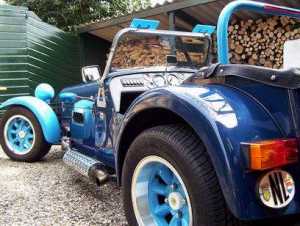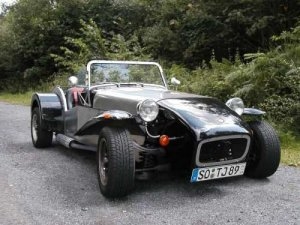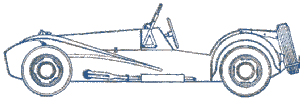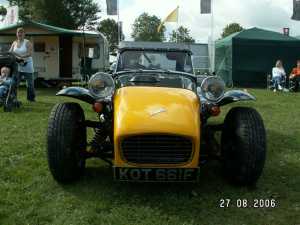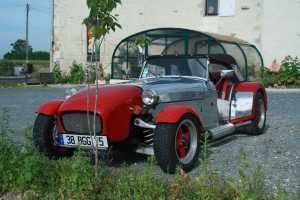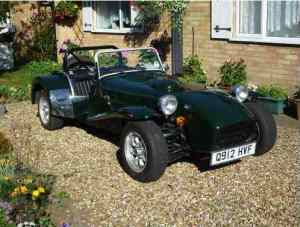 |
|
|
|
|
|
|
|
|
|
Search |
|
|
|
The Locust is a
Sevenesque type car not dissimilar to a Westfield or Caterham in
looks. It differs from most kits as it is built using a wooden
or MDF body tub.
The original kit/plans concept was conceived
because the shape of a Lotus Seven lent itself to this type of
body tub construction. The criteria being that there were no
compound curves in the main body. The Locust body tub is a small
simple tapering box with slab sides. Only the GRP nose cone and
wings have compound curves. The Locust body is skinned in
aluminium which only has to curve in one plane for the rear panels
and the bonnet.The main components of the kit are a set of plans
for the body tub and a chassis.
The chassis can be either Ford or Triumph
based. The most popular Locust chassis is for Ford components and
most are fitted with a combination of Ford Escort MkII and Ford
Cortina Mk IV running gear. The origional Locust used either
Triumph or ford Cortina Front Suspension but over the years many
variations and subtle changes in chassis design have taken place.
There is an option from the manufacturer BWE for double front
wishbones and coil over shocks. Any engine that can be squeezed
between the chassis rails can be fitted. The most popular Locust
engines are the Ford Kent/Xflow engine. Depending on which engine
and carburettor are fitted various holes and bulges will have to
be fitted to the bonnet. As the Locust is a plan built kit car, it
means no two Locust cars are the same. Each builder will tackle
the same area of the build in different ways using different
components.
The car was origionally conceived and
manufactured by John Cowperthwaite. It was marketed as the JC
Locust by J.C. Auto Patterns. A copy of the origional J.C.
brochure can be viewed here. The brochure included one of the
first articles on the Locust.
The rights of manufacture passed to T&J
Sportscars who in addition to the Locust also took over the
manufacture of the Midge (a traditionally styled roadster). The
later introduced a slightly larger version of the Locust based on
Cortina coponents called the Hornet.
The project then passed on to White Rose
Vehicles - WRV. They developed the original Locust into the
current Locust ES and also introduced a new model. The new SIII
was designed with the SVA in mind and uses the Ford Sierra as the
donor vehicle.
In April 2000 the Locust ES project was
passed on to BWE Sportcars who also distribute the Locust's big
brother, the Hornet and the baby of the family the Grasshopper.
BWE are developing all models to utilise Ford Sierra running gear.
BWE can be contacted at the following address:
BWE Sportscars
13 Knowsley St
Barnsley
South Yorkshire
Telephone - 01226 293717
